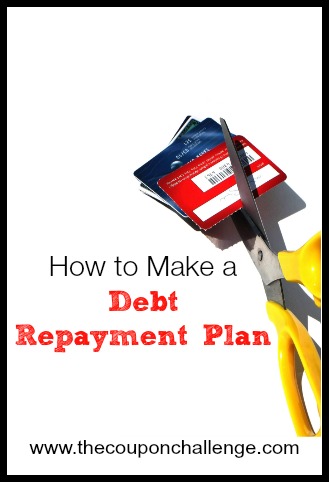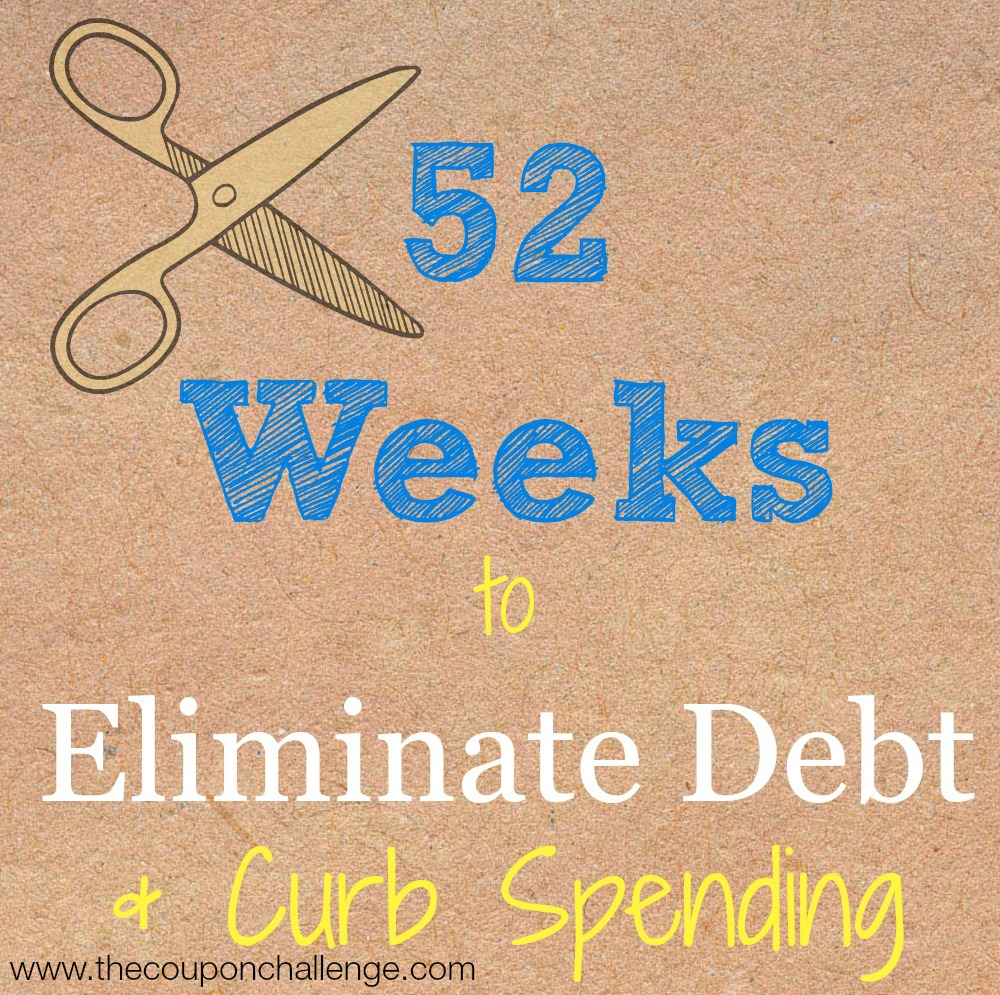You are reading Week 3 of 52 Weeks to Eliminate Debt & Curb Spending. Please read the overview here to learn more about the series & get your FREE financial planner. If you just joined us, please start with week 1.
Now that you have set out your goals and created a budget, it is time sit down and begin Making A Debt Repayment Plan. This means you will be taking time to look at individual debt to determine which to focus on paying off first. It can also include looking at things like settlements, negotiations and closing accounts.
BEFORE you start trying to pay off debt, you need to establish a $1,000 emergency fund. We talked about this last week when you set up your budget. If you have $200 left per month after all your “must pay” expenses, that money goes directly into a savings account. Once you get $1,000 saved up, you can move on to repaying debt. Remember this $1,000 is for emergencies, not because you want a new iPad. Focus on your debt relief goals. You can do it! The new iPad will come later.
MAKING A DEBT REPAYMENT PLAN
1. Get honest about what you can afford. This is the tough part. You really have to get honest with yourself and accept that you may be living outside your means. Look at your budget and start slashing items that are optional until you have created budget monies to get you caught up and start paying down debt.
If you have slashed optional items and still have no spare money, you maybe looking at a deeper financial need of more income. That is something we will deal with in future weeks, but you can begin now honestly evaluating your current job and income situation.
2. Focus on getting current first. While you want to immediately focus on paying off at least one debt, for your own credit score and financial security in the future, it is most important to get caught up on any outstanding debt you have incurred. If you are behind on payments, this is the time to work double time to get caught up.
3. Next step is to focus on paying off one debt at at time. Choose between putting more money toward your lowest balance so it will be paid off earlier, or paying down the debt with the highest percentage of interest. Both are valid methods that have been proven to work well for many people. Your choice depends on the total amount owed, and which will seem more feasible to you in the short and long term.
Personally, we chose to pay off debt with the lowest balance first. Get rid of that $100 Kohl’s credit card bill first then move on to the $500 Home Depot card. If there were 2 credit cards with a fairly close amount; I paid off the card with the highest interest rate first.
4. When you pay off one debt, float that money to the next in line. Instead of looking at that budgeted payment amount as extra money in your budget, leave it in place to pay off the next debt balance in line. Focus your energy on paying off as much debt as possible before beginning to use the extra funds.
This week it is important that you focus on making a debt repayment plan that you can work with easily. This isn’t meant to be your idea of a good plan, but instead, it’s a legitimate plan that you and your income can work within and make happen. Create a debt repayment plan that you know you will be able to stick to long term.
If you are lacking income to pay toward debt, then make what you believe would be realistic goals if you were able to add 10%-20% more income to your household (and are willing to put in the work to make that happen). We’ll work more on opening up income solutions in future weeks.
Week 3 Challenge:
It’s time for budget meeting #3! Look at the amount of debt you currently have (from week #1) and how much money you have left in your budget after your “must pay” expenses.
Determine how much money you can realistically put into your first debt to pay it off. Remember that you are still making minimum payments on all other debt right now as part of your “must pay” expenses. Right now, I am talking about how much money on top of the minimum payment you will pay each month.
Here is an example:
Debts:
$100 Kohls Credit Card – minimum payment $10
$500 Home Depot Credit Card – minimum payment $20
$900 Capital One Credit Card – minimum payment $40
$3,000 Car Payment #1 – minimum payment $200
$10,000 Car Payment #2
$25,000 Student Loan
$250,000 mortgage
If you have $200 left in your budget after all your “must pay” expenses –
Month 1:
Pay $100 to Kohls to pay it off ($10 minimum from your monthly budget plus $90 for the balance.) You will still have $110 “extra” left in your budget. Now you can pay $130 to Home Depot ($20 minimum payment plus $110). Congratulations! You have started paying off debt!
Month 2:
Kohls is now gone, so you have $10 extra in your budget each month giving you $210 for debt repayment. Pay $230 to Home Depot ($20 minimum payment plus $210) . Your Home Depot balance is now $140 plus any accrued interest.
Month 3:
You are still starting off with $210 for debt repayment this month. It’s now time to pay off Home Depot! Pay the total balance of Home Depot ($140 plus any accrued interest). *check* Another debt gone! Pay the remaining money to Capital One.
Month 4:
You have now paid off your first 2 credit cards and have an extra $30 for debt repayment! Pay $270 to Capital One ($40 minimum payment plus $230 “extra” money from budget).
Month 5+:
Keep chipping away at your Capital One balance until it’s paid off then move on to car payment #1. You will eventually have a total of $270 “extra” to put towards your car payment #1 balance. That means you will be paying $470 per month towards that car payment!
You can see how quickly you are eliminating debt! Yes, I know the larger sums will take longer to pay off. BUT as you work to eliminate debt each month, you will have more and more money to add to the balance.
For me, once I paid off car payment #1 , I would give myself a little more money for “optional” purchases. Even allowing a $20 per month allowance to buy yourself a coffee or a new top can keep you on track while preventing you from debt repayment burn out.

{Pin It}
Disclosure: I am not a financial adviser nor do I have formal financial training. All articles are for informational purposes only and should not be interpreted as financial advice or consultation. Please consult your account and/or financial adviser before making changes to your finances. All situations are different, so please consult a professional to determine your individual needs.

[…] 1: Establishing Debt Relief Goals Week 2: Make a Functional Family Budget Week 3: Making a Debt Repayment Plan Week […]